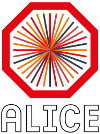 |
Book your shift (SMS link) |
Congratulations: now you are an SPD shifter!!
Get the Duty list from here!
Where are we?
The SPD has a dedicated place in one of the two working rooms next to the general ACR at Point 2. Go to the room opposite the entrance, the SPD place is the first one on the right hand side (2 computers). On the keyboard is a sticker indicating "SPD".
Set your shift enviroment
- SPD CONTROL PANELS - Log in to alispdon001 (rdesktop -a16 -g2550x980 alispdon001). Log in with your NICE username and password, the User Interface opens automatically and log in with the spd username. If the User Interface accidentally closes, you can restart it from the Start menu -> SpdUserInterface.exe
- PIT CONTROL PANELS - Accessible from the same machine as the SPD control panels: alispdon001. You can start it from the Start menu -> PIT ON.
Log in with the spd username.
- SPDMOOD - Log in to "sshdqm spd@SPDHits" THEN launch SPDmood.exe
- AMORE - Log in to "sshdqm spd@SPDHits" and follow the instruction for the amoreAgent .....
- DQM plots - have a look to Data Quality Monitoring plots. Launch amore -d EVE -m GenericGui & on an acr machine and follow the instructions on how to look at those.
- LOGBOOK - From the PCs in the control room open a browser and go to the link Logbook (or follow this link). Log in with your NICE username and password.
- DCS monitoring - check ALICE central DCS monitoring page from here.
- LHC - what's going on OP Vistars
- Coffee - ask the Period Run Coordinator and buy some Nespresso capsules. It may save your mental health especially during night shifts.
Your shift contribution
* the activity indicated with the red star are of particular importance during physics data taking.
Link to the FAQs
Procedures
- Check the shifter plan with the previous shifter. In case no plan has been defined, collect all the possible information in the control room from the shifter leader or the period run coordinator and discuss this with the on-call
- Follow the LHC activity on OP Vistars. It is important to look at the messages written in the left bottom part of this page. To follow LHC activities helps the On-Call for the short term plan.
- Follow the ACR activities and the status of ALICE detector. Make sure that only if ALICE is declared "Super SAFE" the SPD moves to "Beam Tuning" from central DCS. Otherwise SPD stays READY.
-
Collect all the important informations and write them in the EOS report. Few examples:
- In case one HS goes off, identify it and look at the temperature trending, current trending etc.
- Pixel trigger configuration in case of data-taking
- Beam condition and detector condition in case of data-taking
- Follow the expert exercise and track the operations on the electronic log-book (the expert have to help the shifter to write the activity report)
- Everything else that seems to be interesting
-
Check Phases*:
- Look to PIT CONTROL PANEL
- Click + on PitFED
- pitFedStatus, right click and view panel. Go to the tab "Monitor counters".
- Every time "SPD Data Taking" indicator is GREEN then "Check Phases" indicator has to be GREEN. If not, the data taking has to be stopped and restarted.
-
Start SPDmood* (Soon Amore will replace it) and verify that it is connected to one of the GDC used in the data-taking. If a partition is running just put "=Partition_Name" (for istance =PHYSICS_1). Minimal setting of plots to look at:
- Pix mult (under Global Displays): here you see the pixel multiplicity per event (the results are strictly correlated to the data-taking condition, in case of doubts contact the on-call)
- BCmod4 (under Global Displays): here you see the relative phases in which the events occur. The SPD clock frequency is 10 MHz (100 ns clock period), so there are 4 possible 25 ns slots in our 100 ns clock period where the collisions may happen.
- Missing FastOR (under Global Displays) that correspond to the BCmod4 which is filled in the graph abobe. Check also Missing FastOR All Eq.
- Router errors vs error code (under Cons Error Displays); error 16 can be tolerated: this is only related to the counting of the events in SPDmood.
- HitMaps per Equipment: here you can see if there are noisy pixels and note the position they are (row, col).
- Look on DQM plots the HitMaps and FO occupancy*. From here you have a general view of what happens in layer 1 (inner) and layer 2 (outer). If you integrate lots of collision events you will see fully black areas (HS on) and completely white areas (HS off). If you also see areas with few points contact the expert.
-
0SMB trigger rate*
- Have a look to 0SMB trigger rate from CTP counters (2nd from right big black screen in main ACR, ask the CTP shifter in needs of help). The rate depends on activity going on. Report the rate and the type of activity in which you measured it.
-
You can also monitor the rate on PIT CONTROL PANEL
- Click + on PitFED
- pitFedStatus, right click and view panel
- Open the tab "Monitor Counters"
- Check the 0SMB rate in the "Rate" column
-
Write the shifter report on the electronic log-book
- Use EOS Type
- Tag SPD as subsystem
- Use “SPD shift Night/Day/Evening report” in the title (useful for DB filter)
- Summarize the relevant activities
- Collect the interesting run numbers (stable runs, collisions runs, what energy, run with anomalies, run collected during the expert tests..)
- All the useful reports coming from the experienced shift
